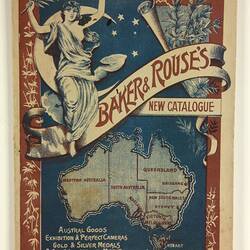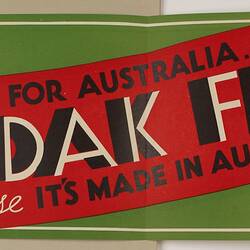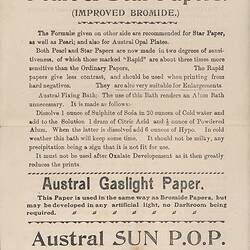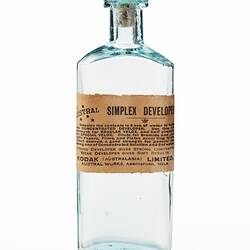Thomas Baker, the Australian photographic entrepreneur, had a curious mind, a scientific intellect and a talent for technology.
He was a manufacturing chemist and an inventor, and devised a range of different products for consumers during the 1870s and early 1900s, for which he also registered patents. These related to a dentifrice to clean teeth, the drying of photographic plates, to photographic papers, a press for photographic mounts, a camera back and other parts, improved methods for packing chemicals, and photographic chemicals.
Coraline Dentifrice
Thomas Baker's dentifrice was developed when he worked in Queensland as a "pharmaceutical, dispensing and homeopathic" chemist, and surgeon dentist, from 1876 until 1880. A sole proprietor in Kent Street, Maryborough, Baker showed his early inventiveness and entrepreneurship by inventing this dentifrice, which he named Coraline. He sold it as both a liquid and powder, and received Vice-Regal patronage for it.
One advertisement explained that it was sold in the "most modern and conveniently sprinkler stoppered bottles" and "A few drops sprinkled on the brush produce a copious froth of most agreeable flavour."
Some of his advertising catchcries were "Whitens and preserves the teeth" "Prevents toothache" and "Imparts a delightful fragrance to the breath".
It appears that Thomas Baker did extremely well for himself with Coraline. Baker exhibited bottles of it at the 1879 Sydney International Exhibition and reportedly gave away 50,000 sample bottles of the dentifrice to attendees, suggesting he had enough capital to invest in savvy marketing campaigns like this. Baker also advertised his product extensively in local newspapers, and had wholesale agents in Sydney, including Myers, and Solomon.
It appears that Baker stopped making Coraline when he moved to Victoria in the early 1880s, however in the mid-1880s he wrote an updated formula for Coraline, suggesting he may have been considering relaunching it in Melbourne.
An Electro-Plating Enterprise
In the early 1880s, Thomas Baker and his wife Alice moved from Queensland down to Melbourne, Victoria. A few years later, in about 1884, Thomas opened up an electro-plating business at 190 Russell Street in the Melbourne CBD.
It seems that by turning his hand to this particular industry, Baker was once again exercising his entrepreneurial talent - seeing an opportunity to enter the electro-plated goods market and profit from his scientific training.
Baker had a good knowledge of chemistry, which was integral to the success of electro-plating in this period, and he may have been able to successfully fill a gap in the local market. It is unclear what type of products he was plating at his premises, but electro-plated domestic products were still in vogue with the middle-class, and other commercial applications existed.
It is not known if Baker made a success of this venture, however this same year, 1884, the Bakers had sufficient financial security to purchase an expensive and stately riverfront property in Abbotsford, Yarra Grange. It is unclear whether the success of Coraline funded this purchase or if Thomas Baker's venture in electro-plating yielded a good profit - or if their money came from another source entirely.
Photographic Chemist and Manufacturer
By 1885 Baker had moved on from electro-plating to the commercial manufacture of photographic dry plates. In the 1880s, dry plate photography was a new convenient way to take photographs and was helping to popularise amateur photography. There was an emerging industry to supply dry plates, but there were very few Australian made products. Once again Thomas Baker saw a gap in the market that he sought to exploit, and another one which utilised his chemistry expertise.
He made and sold his plates, known as Baker's Gelatine Plates, at his existing 190 Russell Street premises, with his wife Alice and his sister-in-law Eleanor Shaw apparently assisting. His photographic plates soon became favoured by amateur and professional photographers around Australia.
Industrial Chemist
In 1886 Thomas Baker built his first factory building, the Austral Laboratory, which was located adjacent to his house Yarra Grange. While it was designed to scale up the manufacture of his photographic plates, it also aimed to provide the foundation for a broader business, in which Baker saw his role as being an industrial chemist.
When, in the following year, he registered a trademark for his famous 'Austral' brand, featuring the word Austral surrounded by stars arranged in the shape of the Southern Cross, he registered it for an extremely wide range of products. These included photographic products, food and confectionary products, beverages, toiletry and cleaning products, medicines, and general chemicals "of every description". The breadth of this trademark reflects Baker's vision for his company as centred around industrial chemistry, and shows just how ambitious Thomas Baker was in this early phase of his career.
This same year, 1887, Thomas Baker established a new photographic retailing and importing company with accountant John Joseph (JJ) Rouse, known as Baker & Rouse. This company dominated Australia's photographic market for the next 21 years.
It appears that Baker wanted to outsource the retailing of his products, perhaps to allow himself more time to develop his interest in a broader form of chemical manufacturing. He established a new company, T. Baker & Company, to manage his manufacturing operations, but while he continued to make photographic goods it has not yet been established if he ever produced any of his proposed food, medicine or household products.
He may have been considering relaunching his earlier dental product, Coraline, under his new Austral brand, because he wrote an updated formula for it in the mid-1880s. This was documented across three pages in the formulae book that he used to document his photographic emulsion experiments and manufacturing formulations. However, it seems that Baker's rapid success in photographic plate and paper manufacture, achieved through the success of Baker & Rouse sales and marketing efforts, probably put paid to any plans he may have had to be an all-purpose manufacturing chemist.
Photographic Innovations
Over the coming decades Baker seemed to focus almost exclusively on his photographic business. He applied his mind to a variety of novel inventions, designed to make new products or enhance the production process of his photographic products. He patented a method to dry photographic plates, he registered patents for photographic papers, a press for photographic mounts, a camera back and other parts, improved methods for packing chemicals, and photographic chemicals.
In 1908, 24 years after Thomas Baker made first dry plates, Baker & Rouse merged with George Eastman's Kodak company to become Australian Kodak Limited. Eastman Kodak now supplied many of its own formulas and manufacturing instructions to Baker to produce, but Baker continued to innovate. He adjusted formulas to suit Australian conditions, improved manufacturing efficiencies, and constantly experimented with emulsions for glass plates, photographic papers and x-ray products, as well as with formulas for toning and fixing products. He even analysed his competitor's photographic emulsions to identify how much silver and gelatine they used in their formulations and how cost effective they were compared to his own products.
Many of these experiments with emulsions and photographic products were painstakingly recorded in his formulae book between 1884 and 1921, which is now preserved in Museums Victoria's Kodak Heritage Collection. Formulae Book - Thomas Baker, Austral Plate Company & Kodak Australasia Pty Ltd, Abbotsford, Victoria, 1884-1921 (museumsvictoria.com.au)
This highly significant object reflects the ever-present curiosity and the innovative achievements of Thomas Baker, who was a remarkable Australian industrialist.
References
De Serville , Paul, 'Thomas Baker', Australian Dictionary of Biography, first published 1979. Biography - Thomas Baker - Australian Dictionary of Biography (anu.edu.au
Maryborough Chronicle, Wide Bay and Burnett Advertiser, 5 December 1878, p.2; 23 May 1878, p.3; 28 May 1878, p.3.
Museums Victoria, HT 33863, Formulae Book - Thomas Baker, Austral Plate Company & Kodak Australasia Pty Ltd, Abbotsford, Victoria, 1884-1921.
Newcastle Morning Herald and Miners' Advocate, 22 August 1878, p.2; Newcastle Morning Herald and Miners' Advocate, 10 May 1879, p.3; 9 September 1879, p.2.
New South Wales Government Gazette, 9 August 1878, p.3131.
Sands & McDougall Directory, 1884, street listing.
Sydney Morning Herald, 8 October 1878, p.3.
Stewart, Ian - Thanks to this former Kodak chemist who identified the Coraline formula in Baker's formulae book in a Museums Victoria research project and undertook archival research to further document the history of Coraline.
Victorian Government Gazette, 13 August 1886, p.2377; 23 Sep 1887, p.2821; 12 May 1893, p.2070; 29 July 1898, p.2892; 14 October 1898, p.3658; 22 June 1900 p.2333; 19 Nov 1902, p.4578; 24 September 1902, p.3914; 9 September 1903, p.2957.
More Information
-
Keywords
-
Localities
-
Authors
-
Article types

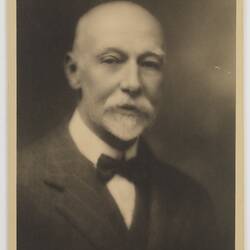

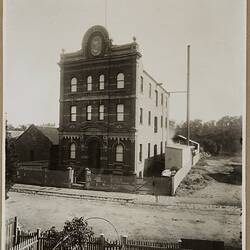
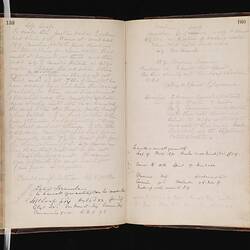
![Box - T. Baker & Co., Austral 'Ordinary' Dry Plate', Austral Laboratory, Melbourne, 1887-1896 [empty]](/content/media/31/1195281-thumbnail.jpg)
